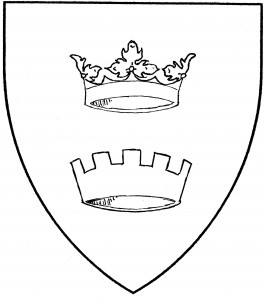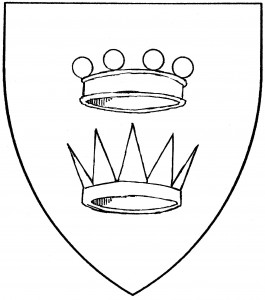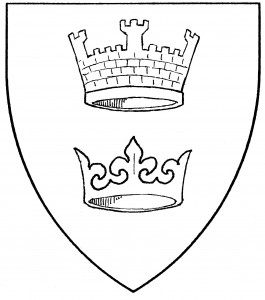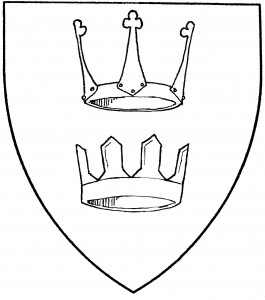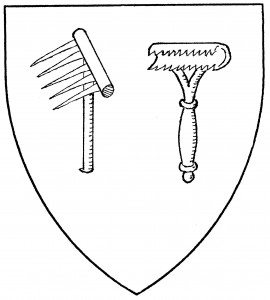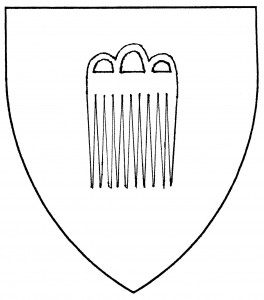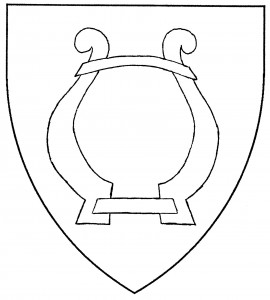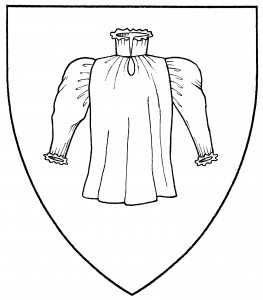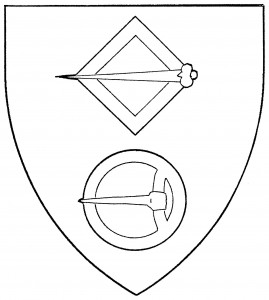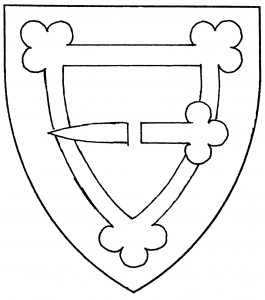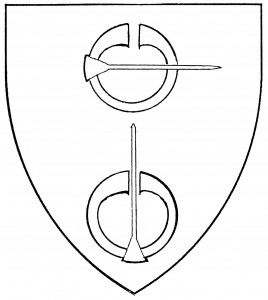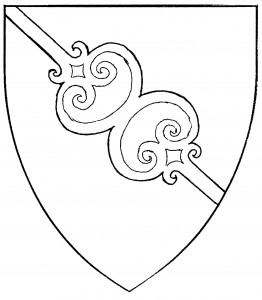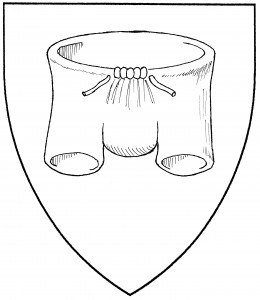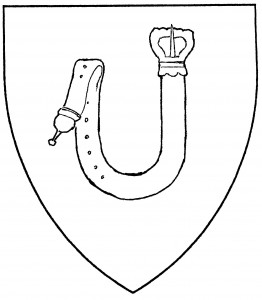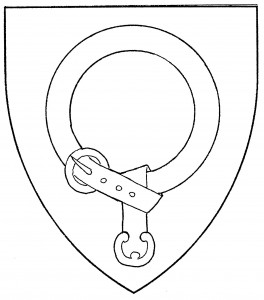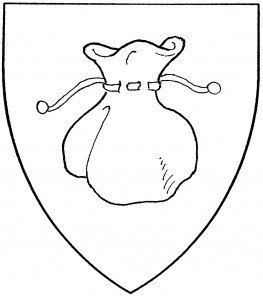A crown is a circlet of metal, often bejewelled, worn on the head of a monarch as an emblem of sovereignty. As an heraldic charge, it was first seen in the attributed arms of St. Edmund the Martyr, c.1282 [ANA2 349].
Similar to the crown is the “coronet”; indistinguishable in form, the alternative term is used in blazons to denote the bearer is less than sovereign. There is neither artistic nor heraldic difference between a crown and a coronet.
There are a number of varieties of crown. The standard Society form is indented, usually showing three points; it was sometimes misblazoned a “crown dancetty” in early Society blazons. This type of crown may be used when the blazon doesn’t specify an exact form.
In period heraldic art, starting in the late 15th Century, exact forms of coronets began to be used to mark rank in a full armorial achievement; however, they did not do so when used as charges on the shield. In the Society, three forms of coronets can mark rank on the shield, as well as in the achievement. Specifically, the ducal coronet, with trilobed fleurons (usually called “strawberry leaves”) around its rim, and the Society-defined comital coronet (or county coronet), with an embattled rim, are reserved to Royal Peers of those ranks. These forms of coronet are regulated not only as charges on the shield, but as regalia as well.
As viscomital and baronial coronets of rank date to no earlier than the Stuarts, they are not defined for Society armory per se; however, the pearled coronet is found in 16th Century Scots and French achievements [e.g., Lindsay, 1542], and may be used by Society Viscounties and Court Baronies. (The exact number of pearls is left unblazoned, but Society artists generally use twelve for Viscounties and six for Court Baronies, following the Stuart definitions.) As regalia, the exact forms of viscomital and baronial coronets are regulated by the individual Kingdoms.
Other forms of crown are the “eastern crown”, also called an “antique crown”, in the arms of Grant of that Ilk, late 16th C. [Lord Crawford’s Armorial, fo.114]; the “mural coronet” (from Latin mur, “wall”), drawn with masoning, and sometimes turrets, dating to at least 1572 [Bossewell II.77º]; and the “crown vallary” (from the Latin vallare, “to fortify”), the projections meant to resemble a defensive palisade, dating to at least 1581 [de Bara 189].
Society armory also has examples of coronets which, though found in modern heraldry texts, have not yet been dated to period. These include the “ancient crown”, also called a “crown flory”; and the “Saxon crown”.
In Society armory, the use of a crown or coronet is reserved to Kingdoms, Principalities, Royal Peers, and Court Baronies; it is required in the arms of Kingdoms.
For related charges, see jewelry. See also wreath.
The King of the West bears: Or, a crown dancetty of three voided within a laurel wreath vert.
The King of the East bears: Purpure, within a laurel wreath vert fimbriated Or, an eastern crown of three grand points tipped with pearls and two lesser points, all Or.
Arrowyn of Emerald Moor bears: Sable, a mullet of eight points, each point terminating in a shamrock, in chief a crown fleury Or, all within a bordure potenty quarterly argent and vert.
Steffen Albert Rheinbauer bears: Azure, a sinister gauntlet clenched aversant bendwise sustaining a rose slipped and leaved bendwise sinister argent, in chief a mural coronet, all within an orle of chain Or.

